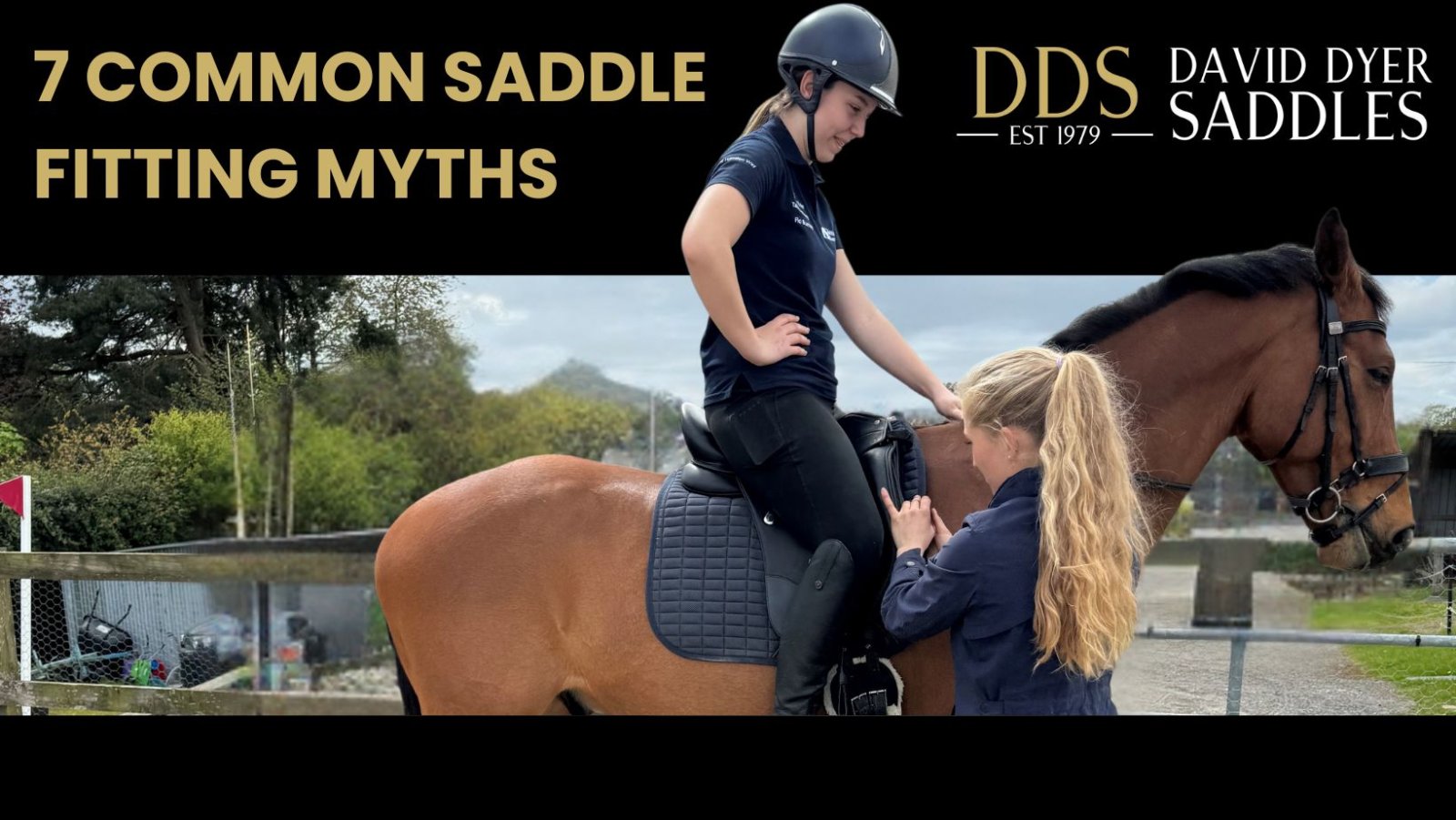 Saddle fitting is an art and one of the most critical aspects of riding comfort and horse health, but there’s a lot of misinformation out there. To help riders make informed decisions, we’re debunking some of the most common myths about saddle fitting that we come across. Whether you’re new to riding or a seasoned equestrian, understanding the truth about saddle fit can make all the difference for both you and your horse.
Saddle fitting is an art and one of the most critical aspects of riding comfort and horse health, but there’s a lot of misinformation out there. To help riders make informed decisions, we’re debunking some of the most common myths about saddle fitting that we come across. Whether you’re new to riding or a seasoned equestrian, understanding the truth about saddle fit can make all the difference for both you and your horse.
1. Panels that adapt or change to the horse's back
This is one we hear quite often. While flocked panels do compress and mould through use and can be adjusted by your saddle fitter by either adding or removing flocking, there is no saddle that you can simply put on any horse, expecting it to adapt to their shape without professional adjustment. A saddle that truly fits requires the expertise of a saddle fitter to ensure it’s right for your horse.
2. "This saddle fits everything"
We often hear about that magic saddle in the tack room that fits every horse it’s put on. Unfortunately, this is just a myth. While you can have a saddle that works on two horses of similar shape and build, we haven’t found one that fits every horse perfectly. Every horse has different conformation, and a one-size-fits-all saddle just doesn’t exist.
3. A wide saddle will fit a wide horse
While we’re always happy to help source saddles for fitting or upgrades, it’s not as simple as getting the same seat size and width in a different model. Saddles are made with varying tree designs, panel shapes, girthing options, and more. So, unfortunately, not all 17” wide saddles will fit the same. It’s important to remember that width is just one part of the equation when fitting a saddle.
4. A saddle for life
Even with the adjustability offered by modern saddles, sometimes a horse’s change in shape is beyond what a saddle can accommodate. While some horses may stay in the same saddle for most of their working life, this isn’t always the case—especially for young or developing horses, where changes in shape can be dramatic. As horses develop muscle or age, their saddles often need to be adjusted or replaced to ensure continued comfort.
5. Saddle fitters are only out to sell new saddles
Our saddle fitters will only recommend a new saddle if the one you currently have cannot be adjusted to fit, or if it’s completely unsuitable for your horse. We do everything we can to make adjustments and work with your current saddle, but sometimes it’s just not an option. Our priority is always your horse’s comfort. If we suggest a new saddle, it’s because we believe continuing with the current one may cause discomfort or hinder your horse's performance.
6. A saddle just for breaking or backing
The saddle used to back a young horse is incredibly important. While we understand that saddles fitting a horse at rest may not fit as well once the horse is moving, and that a young horse's shape can change quickly after starting under saddle, the first saddle they wear should be fitted to them. This ensures that their early experience with a saddle and rider is as positive as possible.
7. If you need to use a pad, your saddle doesn’t fit
In essence, this is true, but corrective saddle pads can play an important role in saddle fitting. Pads can be a useful temporary solution if your horse has asymmetry in muscle tone, is between sizes of gullet plates, or is on a weight loss program or returning to work after a break. Used correctly, a corrective pad can help improve saddle fit while your horse builds muscle or regains fitness, keeping them comfortable throughout their journey.